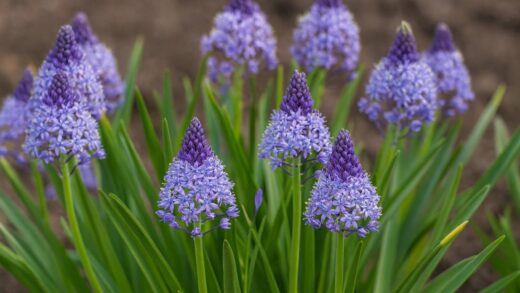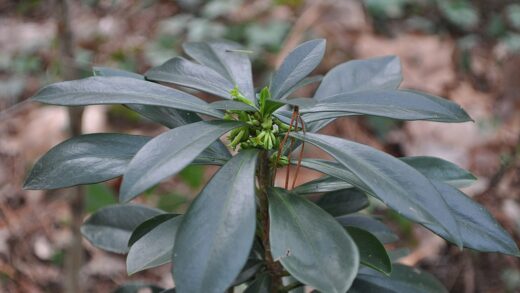Despite their robust appearance, gladiolus can be susceptible to a variety of diseases and pests that can tarnish their beauty and, in severe cases, threaten the survival of the plants. Proactive management and early detection are the cornerstones of keeping these problems at bay. A healthy, well-cared-for plant growing in its ideal environment is naturally more resilient to attack. However, even with the best care, issues can arise. Familiarity with the most common ailments and unwelcome visitors is essential for any gladiolus grower, as it enables swift and effective intervention to protect the health and vigor of their floral display.
Diseases affecting gladiolus are predominantly fungal in nature, thriving in conditions of high humidity, poor air circulation, and waterlogged soil. Pathogens can infect all parts of the plant, including the leaves, stems, flowers, and the corms themselves. Some of the most prevalent diseases include Botrytis blight, which causes spots on flowers and a rot on stems, and various corm rots caused by fungi like Fusarium and Stromatinia. Viral diseases, often transmitted by insects, can also be a problem, causing streaking on flowers and mottled patterns on leaves, for which there is no cure.
On the pest front, gladiolus have a key adversary in the gladiolus thrips. These tiny insects are the most destructive pest of gladioli, feeding on the leaves and, most damagingly, the developing flower buds. Their feeding activity causes silvery streaks on the leaves and results in deformed, discolored flowers that often fail to open properly. Other common pests include aphids, which can transmit viruses, spider mites, which thrive in hot, dry conditions, and various caterpillars that may chew on the leaves and flowers.
The most effective strategy for managing both diseases and pests is an integrated approach that begins with prevention. This includes planting only healthy, disease-free corms, ensuring proper plant spacing for good air circulation, watering at the base of the plant to keep foliage dry, and practicing good garden sanitation, such as removing and destroying infected plant debris. Regular monitoring of the plants allows for the early detection of any issues, making control measures—whether cultural, biological, or chemical—far more effective.
Common fungal diseases
Fungal diseases are among the most common and damaging problems encountered in gladiolus cultivation. These diseases are caused by microscopic fungi that thrive in specific environmental conditions, often related to excess moisture and poor air circulation. They can cause a range of symptoms, from leaf spots and blights to stem cankers and devastating corm rots that can wipe out an entire stock of stored corms. Understanding the signs of these diseases is the first step in effective management.
More articles on this topic
Botrytis blight and rot, caused by the fungus Botrytis gladiolorum, is a widespread and serious disease. It can affect leaves, flowers, and stems, often appearing as small, water-soaked spots that quickly enlarge and become covered in a fuzzy, gray mold, especially in humid weather. On flowers, it causes discolored spots and can quickly turn the entire bloom into a slimy mess. The infection can also progress down the stem, causing a neck rot that makes the flower spike collapse. The fungus produces hardy resting structures called sclerotia, which can survive in the soil and on infected corms, making sanitation crucial.
Corm rots are another major threat, with Fusarium yellow and corm rot being one of the most destructive. Caused by Fusarium oxysporum f. sp. gladioli, this soil-borne fungus infects the corm and roots, often through wounds. The infection disrupts the plant’s vascular system, leading to a progressive yellowing and dieback of the leaves, starting from the tip. The plant will be stunted and may fail to flower. When the corm is cut open, a characteristic brown or black rot is visible in the core. The fungus can persist in the soil for years and is easily spread through infected corms.
Stromatinia corm dry rot is another serious disease that causes a dry, corky rot on the corms, often starting at the base. Infected plants may emerge late in the spring, appear stunted, and have yellowing lower leaves. The infection can also cause a neck rot at the soil line, causing the plant to suddenly wilt and die. Good sanitation, long crop rotations (not planting gladiolus in the same spot for at least four years), and careful inspection of corms before planting are key preventative measures for all these fungal diseases.
Prevalent insect pests
Insect pests can cause significant damage to gladiolus, affecting both the aesthetic quality of the flowers and the overall health of the plant. Among the various insects that may feed on gladiolus, one stands out as the primary and most formidable foe: the gladiolus thrips. However, other pests can also become problematic and warrant attention. Early identification and control of these pests are vital to prevent widespread infestations.
More articles on this topic
Gladiolus thrips (Taeniothrips simplex) are tiny, slender insects that are almost invisible to the naked eye. Both the adults and larvae feed by piercing the plant’s cells and sucking out the contents. On the leaves, this feeding creates silvery-white streaks and flecks. The most severe damage occurs when they infest the developing flower spikes, feeding on the buds hidden within the sheaths. This results in flowers that are distorted, streaked with discoloration, and often fail to open at all. In severe infestations, the entire flower spike can be destroyed. Thrips can also overwinter on stored corms, so treating corms before storage or planting is a critical control point.
Aphids are another common pest found on gladiolus. These small, soft-bodied insects typically cluster on new growth and the undersides of leaves, sucking sap from the plant. While a small infestation may cause minimal physical damage, large populations can cause leaves to curl and become distorted. The more significant threat from aphids is their ability to transmit viral diseases from one plant to another. As they feed, they can introduce viruses that cause incurable conditions like mosaic virus, which results in mottled leaves and streaked flowers.
Other pests to watch for include spider mites, which are particularly problematic in hot, dry weather. These tiny arachnids create fine webbing on the undersides of leaves and cause a stippled, faded appearance on the foliage. Caterpillars, such as the corn earworm, may also occasionally feed on gladiolus, chewing holes in the leaves and burrowing into the flower buds. Regular inspection of the plants, including the undersides of leaves and deep within the leaf sheaths, is the best way to catch these pest problems early.
Viral and bacterial diseases
While fungal diseases are the most common, gladiolus can also be affected by viral and bacterial infections, which can be particularly troublesome as they often have no cure. Once a plant is infected with a virus, it is typically infected for life, and the only effective management strategy is to remove and destroy the plant to prevent further spread. These diseases often manifest as cosmetic issues but can also weaken the plant over time.
The most frequently encountered viral disease is Bean Yellow Mosaic Virus (BYMV), which in gladiolus causes the condition often referred to as “mosaic.” The primary symptom is a mottling or mosaic-like pattern of light green or yellow patches on the leaves. The flowers of an infected plant may exhibit “color breaking,” which is a streaking or blotching of the normal petal color. While this can sometimes produce interesting patterns, it is a sign of disease that weakens the plant and reduces the vigor of the corm. The virus is primarily spread by aphids.
Cucumber Mosaic Virus (CMV) is another virus that can infect gladiolus, causing similar symptoms to BYMV, including leaf mottling and flower color breaking. The symptoms can be variable and may also include stunting of the plant and deformation of the flowers. Like BYMV, this virus has a very wide host range and is also transmitted by aphids. Because there is no chemical cure for viral infections, prevention is the only viable approach. This involves controlling aphid populations and immediately removing any plant that shows symptoms of viral infection.
Bacterial diseases are less common than fungal diseases on gladiolus but can still occur. Bacterial leaf blight or scab, caused by species like Pseudomonas, can cause water-soaked lesions on the leaves that may turn brown or black. Scab can also affect the corms, causing sunken, scabby lesions. These diseases are favored by warm, wet conditions. As with other diseases, prevention through good cultural practices is key. This includes avoiding overhead watering, ensuring good air circulation, and planting only clean, healthy corms.
Integrated pest management strategies
An Integrated Pest Management (IPM) approach is the most sustainable and effective way to handle diseases and pests on gladiolus. IPM is a holistic strategy that combines multiple tactics, prioritizing preventative and non-chemical methods before resorting to pesticides. It focuses on understanding the life cycles of pests and pathogens and using this knowledge to disrupt them. This approach minimizes risks to human health and the environment.
The foundation of any IPM program is prevention and cultural control. This starts with selecting and planting only certified disease-free corms. Practicing crop rotation by not planting gladiolus in the same soil for at least four years helps to reduce the buildup of soil-borne pathogens. Proper plant spacing ensures good air circulation, which allows foliage to dry quickly and makes conditions less favorable for fungal diseases. Watering should be done at the base of the plant, avoiding the leaves, and preferably in the morning. Finally, good sanitation, which includes removing weeds and clearing away all plant debris at the end of the season, eliminates overwintering sites for pests and diseases.
Monitoring and early detection are the next crucial steps. Regularly inspect plants for any signs of trouble, paying close attention to the undersides of leaves and the developing flower spikes. The use of yellow sticky traps can help to monitor for flying pests like thrips and aphids. When a problem is detected early, control is much easier. For example, a small aphid infestation can often be managed simply by washing them off with a strong jet of water or by hand-crushing them.
When control measures are needed, IPM prioritizes the least toxic options first. Biological controls, such as introducing or encouraging beneficial insects like ladybugs and lacewings that prey on aphids and thrips, can be very effective. Horticultural oils and insecticidal soaps can be used to control soft-bodied insects with minimal impact on beneficials. If a fungicide is necessary for a disease like botrytis, products based on copper or sulfur are often preferred. Chemical pesticides are used only as a last resort when a pest or disease threatens to cause significant damage and other methods have proven insufficient.


















